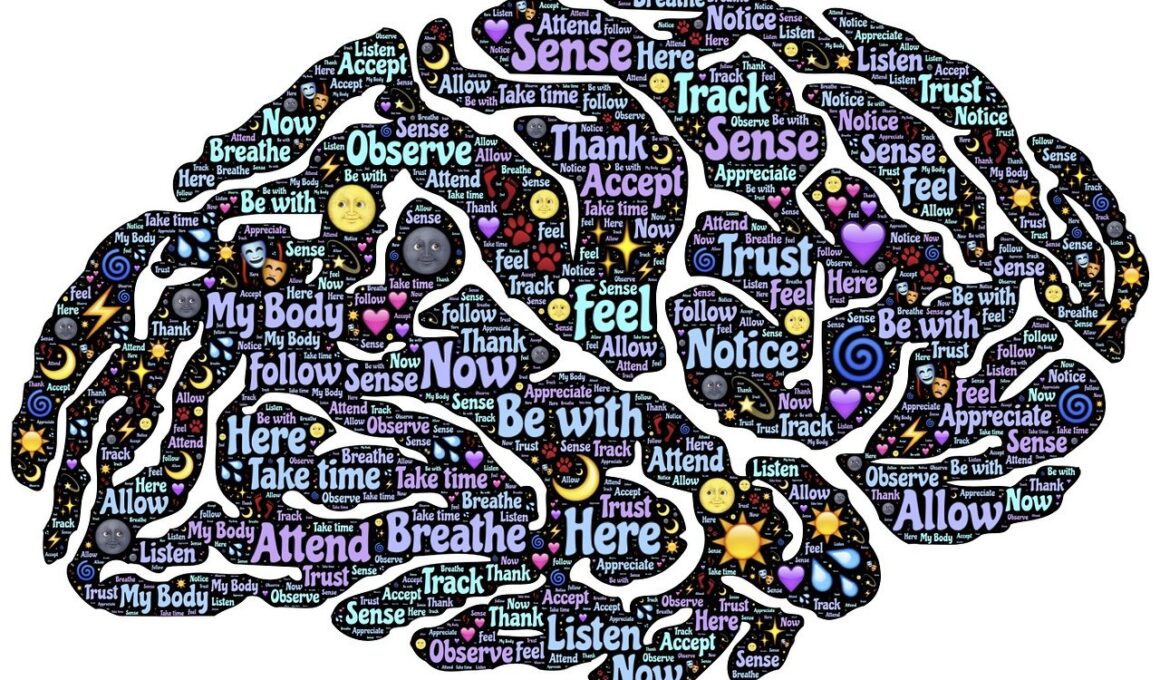The Role of Meditation in Enhancing Creativity: Insights from Brain Imaging Studies
In recent years, research into the science of meditation has revealed profound links between meditation practices and enhanced creativity. Studies using brain imaging technology such as fMRI have provided compelling insights into how different types of meditation affect brain activity. These insights suggest that meditation might not only help individuals manage stress and anxiety but also foster creative thinking. Creative thinking is defined as the ability to produce new ideas or concepts and is crucial for problem-solving. By focusing attention inward and practicing mindfulness, the brain enters a state conducive to creativity. This shift in cognitive function is often seen in increased activity within the default mode network (DMN) of the brain. The DMN is associated with daydreaming, spontaneous thought processes, and creativity. The findings suggest that meditation might enhance our ability to think divergently, a key aspect of the creative process. Regular practice can condition the mind to cultivate more expansive thinking, ultimately leading to greater creative output. The relationship between meditation, cognitive shifts, and creativity is an area ripe for further exploration.
One key aspect that researchers have highlighted is the significant change in brain structure brought about by consistent meditation practice. Neuroplasticity allows the brain to reorganize itself and form new neural connections throughout life. According to studies, this phenomenon is enhanced during meditation, which can lead to structural and functional changes correlated with enhanced creative abilities. Increased gray matter density in specific regions, such as the anterior cingulate cortex, is linked to improved creative thinking and emotional regulation. Brain scans reveal that individuals who meditate regularly exhibit a more robust DMN, leading to more spontaneous idea generation and a higher ability to connect disparate concepts. Meditation facilitates a unique cognitive state, often referred to as the “open mode” of thinking. This state is characterized by relaxed attention, allowing the mind to wander freely, forming connections that may not have been visible under focused thinking. This divergent thinking is essential for creativity as it allows unique perspectives to emerge. Understanding how meditation alters brain function opens new pathways for using mindfulness as a tool to enhance innovation and creativity in personal and professional fields.
The Impact of Mindfulness on Creative Thinking
Mindfulness meditation has gained popularity due to its ability to enhance present-moment awareness and decrease rumination. Rumination often interferes with the creative thought process, leading to blocks and decreased innovation. Mindfulness encourages an acceptance of thoughts and emotions, permitting a flow of ideas without judgment. Brain imaging studies indicate that mindfulness practice can increase the brain’s connectivity in areas associated with attention and executive functions, such as the prefrontal cortex. This connectivity allows for improved problem-solving capabilities and creative thinking. Furthermore, mindfulness can lead to decreased activation of the amygdala, which is responsible for the brain’s response to stress. Lower stress levels can create the ideal mental environment for creativity to flourish. While there is ongoing research in the field, preliminary findings consistently reveal that mindfulness practice impacts cognitive processes positively. Enhanced attentional control and emotional flexibility contribute to a more robust creative capacity. As individuals broaden their mindfulness practice, the findings suggest they may experience increased insight and greater originality in their creative endeavors. Creativity is essential in various sectors, particularly in business and the arts, making understanding these practices even more important.
The correlational relationship between meditation and mind-wandering suggests that allowing thoughts to flow freely may trigger new, creative insights. Researchers study mind-wandering as a critical component of the creative process, as it is often during these moments that unique ideas and solutions occur. Brain scans show that the areas activated during mind-wandering overlap significantly with those engaged during periods of intense creativity. The brain’s tendency to create connections spontaneously during moments of relaxation or distraction indicates that regulated mind-wandering can benefit creativity. By practicing meditation, individuals learn to access this relaxed state, thereby allowing ideas and innovations to emerge. Furthermore, creative tasks performed after a meditation session tend to yield more original and lateral ideas. Many creative professionals report higher productivity levels linked to their meditation habits. This issue emphasizes the growing need for integrating mindfulness practices into various professional realms, especially those requiring creativity. Ultimately, understanding these neurobiological links helps further establish the importance of meditation in enhancing creativity, providing schooling systems and workplaces with research-backed methods to promote innovative thinking among individuals.
Evidence-Based Benefits of Meditation on Creativity
Multiple studies have investigated the direct influence of meditation on creativity, providing evidence that consistently supports its effectiveness. Different types of meditation, such as focused attention, open monitoring, and Zen practices, each demonstrate unique effects on creativity. For instance, focused attention meditation enhances the ability to concentrate and refine specific tasks. In contrast, open monitoring meditation, which encourages a broader awareness, has been linked with greater creative output. Research emphasizes that practicing these techniques can lead to improved associative thinking and a more significant ability to link seemingly unrelated concepts. Creative expression is crucial for mastering diverse skills across various fields, including art, music, writing, and problem-solving. Studies have also shown that participants who engage in meditation exhibit a marked increase in original thinking compared to non-meditators. This suggests that incorporating meditation into educational curriculums and workplaces could facilitate innovative thinking. The potential exists for a cyclical loop: as creativity flourishes, individuals may be more prone to engage in meditation and mindfulness practices, which further enhances their creative process over time.
Understanding the neurobiological ramifications of meditation on creativity further unveils the intricate link between emotional well-being and enhanced cognitive function. Engaging in regular meditation not only promotes relaxation and reduces stress but also cultivates a compassionate mindset. This emotional stability is crucial for unleashing true creative potential as it allows individuals to explore their thoughts and ideas without fear of judgment. Meditation encourages a non-attachment perspective to creativity, enabling individuals to chase innovative concepts while remaining open to various possibilities arising from their experiences. This mindset fosters resilience when confronting creative blocks or failures. The benefits of meditation are increasingly relevant in today’s fast-paced, pressure-filled world. Prioritizing time for meditation may result in longer-term gains in cognitive flexibility and openness to experience, key components of creativity. With more organizations recognizing the value of creative problem-solving, the intersection of emotional health and creativity is critical. This awareness prompts further investigation into implementing meditation and mindfulness practices within companies to enhance employee well-being and output. Ultimately, by investing time into these practices, both personal fulfillment and professional success can be achieved.
Conclusion: Embracing Meditation for Creativity
As the exploration of meditation, mindfulness, and creativity deepens, compelling evidence emerges supporting the idea of integrating these practices into daily life. The contributions of brain imaging studies underline the profound neural changes associated with meditation, with far-reaching implications for creative thinking and problem-solving. Harnessing the benefits of meditation may contribute to developing not only individual creativity but also enhance collaboration and innovation within teams. By acknowledging the impact of meditation on both cognitive flexibility and emotional resilience, educators, professionals, and individuals can nurture environments that encourage creative exploration. Future implications for research may further unveil how different meditation techniques and durations affect creative thinking differently. Establishing a consistent meditation practice may shift paradigms in workplaces and educational systems, potentially revolutionizing how we approach creativity. Embracing meditation can be a transformative journey leading to not just improved well-being but also heightened creativity. As meditation enters mainstream consciousness, it stands as a promising pathway to unlocking human potential. Thus, integrating meditation as a functional tool in various settings could inspire individuals to explore their creative depths wholeheartedly. Stakeholders must take this opportunity to discover the measurable effects of these practices on productivity and innovation.
Moreover, drawing from the perspectives of different cultures on meditation could facilitate innovative approaches to creativity enhancement. Many traditions around the globe have utilized meditation not only for personal growth but also for fostering communal creativity. Integrating diverse cultural insights and methodologies offers a broader view on how the practice can be adapted to fit different communities and workplaces. It also highlights the importance of incorporating diverse practices that resonate across demographics. Acknowledging the interplay between cultural background and meditation can unlock new pathways for creative expression. Workshops that blend innovative practices from various cultural lenses can further stimulate collaborative creativity. Importantly, the integration of meditation into creative spheres does not need to undermine individual expressions of creativity. Instead, it can augment and elevate them, encouraging individuals to explore their unique paths. Collaborative creativity, fueled by shared meditation practices, can yield enriched problem-solving and innovation. This multilayered approach presents a dynamic framework for fostering creativity that aligns with 21st-century demands. Ultimately, as meditation garners recognition as an essential tool for revitalizing creative processes, the potential for broader applications spanning education, business, and beyond calls for comprehensive exploration.


